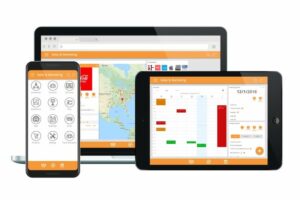Unlocking Digital Power: A Real-World Guide to App Creation Without Coding
In today’s digital-first world, building custom tools for your workflow doesn’t need to start with hiring a developer. Thanks to visual development platforms, creating functional, user-friendly apps has become accessible to everyone, from business owners and school admins to field workers and freelancers.

One of the most practical tools leading this revolution is Google’s AppSheet. It’s part of the broader Google Workspace ecosystem and enables users to build fully functional mobile and desktop applications using nothing more than a spreadsheet and some creativity.
Whether you want to manage attendance, monitor stock, streamline approvals, or build a lightweight CRM system, AppSheet makes it possible to go from idea to working solution—without writing a single line of code.
What Is AppSheet and Why Does It Matter
AppSheet is a powerful platform that brings the codeless promise to life. It’s designed for those who understand their business but may not understand programming. By connecting your structured data—typically stored in Google Sheets or Excel—you can generate a working app in minutes.
Here’s what you can do with it:
Build dynamic mobile or web apps from spreadsheets
Customize user interfaces with views, forms, and actions
Set permissions and control access with ease
Automate processes like email alerts or approvals
Integrate with tools across Google Workspace, including Drive, Gmail, and Calendar
The beauty of no-code platforms like AppSheet lies in their speed and flexibility. You can build, test, and deploy tools without waiting for technical help.
Real-World Use Cases: AppSheet in Action

1. Business Process Automation for SMEs
Many small and medium enterprises still use paper records or chat apps for operations. With AppSheet, you can digitize workflows such as order logging, payment tracking, and delivery updates—directly from your spreadsheet.
Example: A local bakery could build an app to manage daily orders, customer details, and delivery status—all synced in real time.
2. Attendance Tracking in Schools and Colleges
Educational institutions can modernize their attendance process using mobile forms. Teachers mark presence on their devices, and admins get instant updates on student data via connected sheets. It’s simple, efficient, and low-cost.
3. Field Data Collection for NGOs
Teams collecting rural data can benefit from apps that work offline. As offline mode is available, enabling data input even without internet, syncing back when a connection is restored. This is ideal for health, agriculture, or social sector surveys.
4. Inventory and Stock Monitoring
Retail shops, farms, and suppliers can maintain live inventory data in spreadsheets. Your data can transform after pairing into a sleek app that tracks incoming and outgoing stock with alerts and reporting dashboards.
5. Building a Lightweight CRM
Instead of paying for expensive subscription-based CRM software, you can design your customer tracking system. From lead details to interaction history, all data stays secure within your Google Workspace environment, with app access limited by user roles.
Quick Guide: How to Build with AppSheet
Step 1: Prepare Your Data
Make sure your spreadsheet is clean—use headers, unique IDs, and consistent formatting.
Step 2: Launch Your Project
Log in to appsheet.google.com and start a new project. Choose your spreadsheet as the data source.
Step 3: Customize the Layout
Use the intuitive interface to build tables, forms, buttons, and views. No programming required.
Step 4: Add Logic and Automations
Trigger email alerts, approvals, or file uploads based on user actions. It’s a smart way to streamline repetitive tasks.
Step 5: Share and Deploy
Publish your app and invite users based on email permissions. Apps can be shared via links or installed as progressive web apps.
Tips and Challenges to Keep in Mind
While our given no-code tool can lower the barrier to entry, there are a few considerations:
Learning curve: You still need to understand data structure, app logic, and user flow.
Feature limitations: Complex enterprise-level features may require more advanced platforms.
Pricing: Free usage is fine for basics, but advanced automations and controls are part of paid plans.
Final Take: Democratizing App Development

In a country like Nepal, where access to developers may be limited or costly, AppSheet can be a game-changer. It empowers individuals, businesses, and educational institutions to innovate at their own pace.
Already using Google Workspace? You likely already have what you need to get started. Whether it’s organizing leads, collecting data in the field, or streamlining daily operations, you can think big without writing code.
Digital transformation isn’t just for the tech elite. With no-code tools like AppSheet, it’s within reach of everyone.